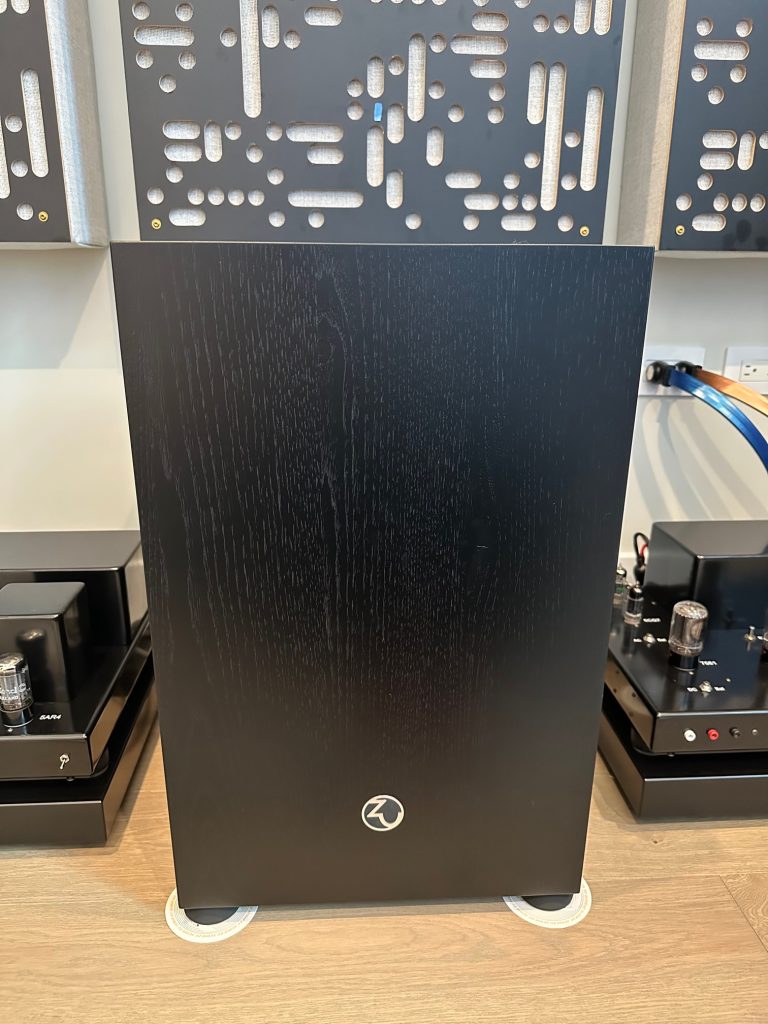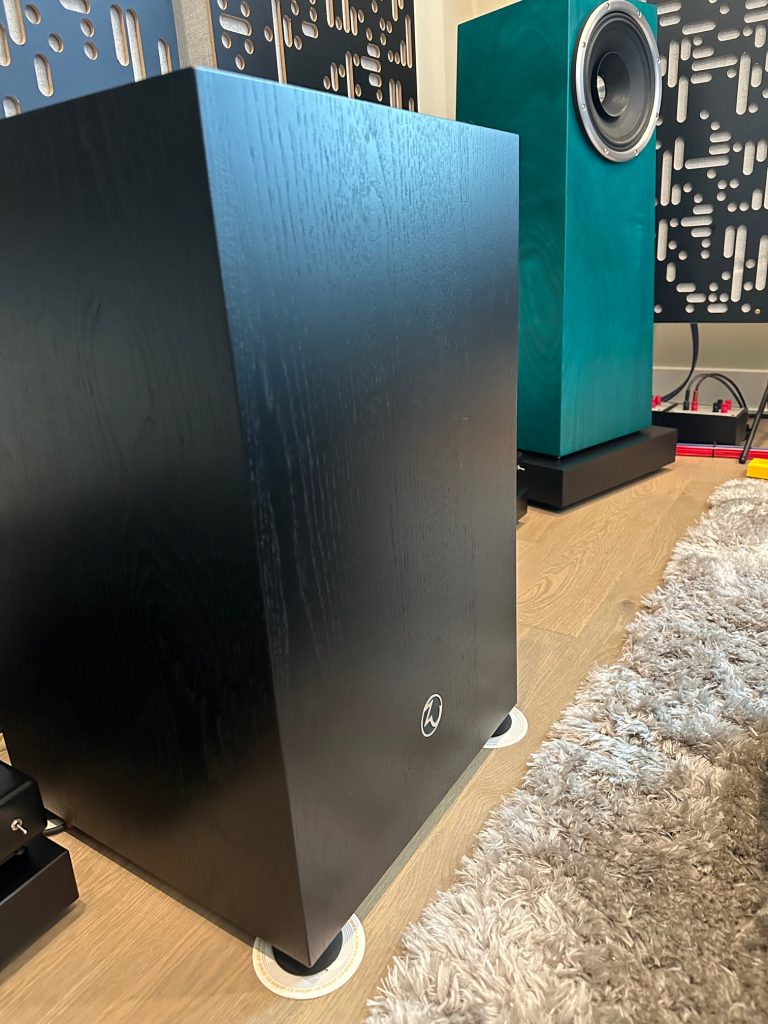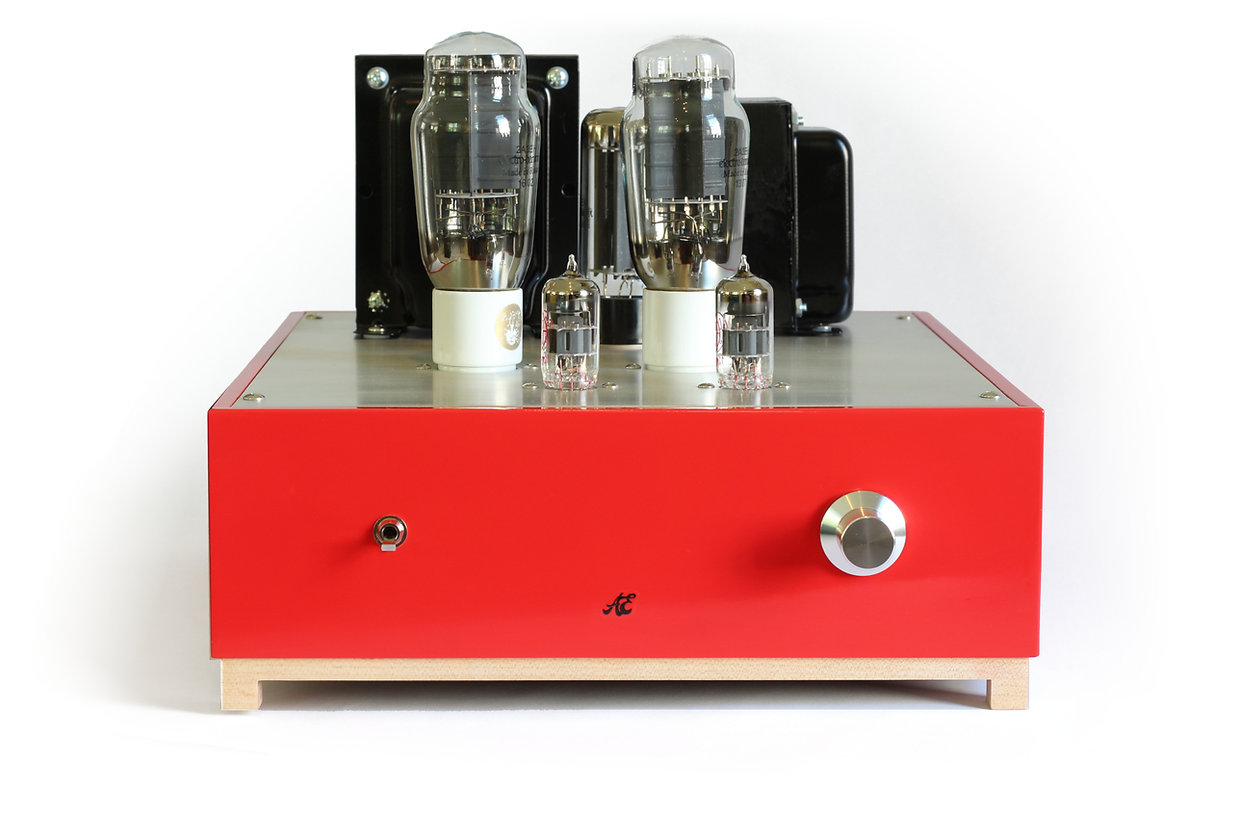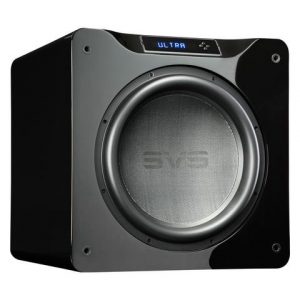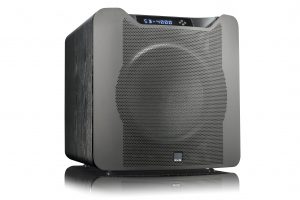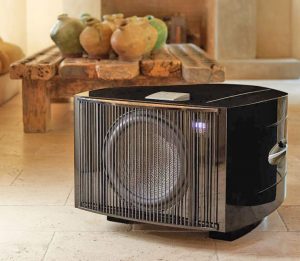I think those who have read my past reviews will see that there are some brands that I keep coming back to. The brands that I really like and come back to make great products that not only perform well, but are priced right for their performance and are differentiated from their competition. Zu Audio is one of those brands. My first experience with Zu was owning a pair of Soul Supremes and my first review for Zu was a review of their Soul 6. I thought the Soul 6 was so incredible that I bought it, and it is still my primary speaker in my listening room. I also have reviewed their new Union 6 which I thought set a new standard for performance at its price point. Today I am back to review the Zu Undertone MK II (now MK III). Without spoiling the review, I will tell you that not only did I buy it, but I truly believe it can change the way audiophiles listen to music and has the ability to restart the debate of whether a 2-channel system can actually be better as a 2.1-channel system. So with all of that said, lets dive in.
Audiophiles and Subwoofers
I started my love of audio in the home theater world, a place where the subwoofer and its power were well known, well respected, and considered by most to be necessary for delivering a great movie experience. As I got older and my tastes changed, and I found myself venturing more and more into the classic 2-channel audiophile world and I noticed that the subwoofer seemed to disappear.
Many audiophiles seem to dislike subwoofers, unless they are using stand mounts. As I did more research, the arguments I heard did resonate. A good 2 channel system is fast and incredibly articulate, subwoofers are not. A good 2-channel system should be able to get low enough in the bass region to make the need for a subwoofer unnecessary. Music, unlike movies does not normally make use of bass below 30Hz. Integrating a subwoofer into a 2-channel system is incredibly hard, and creates more compromises then benefits.
In all honesty, while I did not agree with most of these statements initially, I began to as my 2 channel journey went on. I bought a class leading subwoofer considered by audiophiles to be one of the best musical subwoofers out there, and try as I might, I just could not get it to match with my Soul 6. Even with it dialed in the best it could, the subwoofer made the Zu's sound slow and syrupy. While it added weight, it didn't even really extend the low end of 2-channel setup very far as this subwoofer rolled off in my space at 30Hz, and was down 10dB by 24Hz. Unless I was listening to pop or EDM, the subwoofer remained off. In the end, I thought the conventional audiophile wisdom was right, subs just didn't have a place in a high end 2-channel setup. Boy, was I proven wrong.
Reviewing the Zu Undertone MK II
I was telling a friend of mine about my experience with my existing sub and my honest disappointment with the endeavor, when he laughed at me and said "Sam, you love Zu, why have you not tried one of their subwoofers?"
This caused me to pause, he was right, I really never considered the Zu Undertone MK II. Now I thought I had my reasons, in comparison to the sub I already owned, the Undertone MK II on paper was 20% less powerful, its spec'd performance was about the same as what I already had, and Zu was not as well known for its subwoofers as it is for its speakers. Luckily, curiosity got the better of me and I reached out to Phil at Zu and asked if he would allow me to review the Undertone MK II. Phil agreed and three weeks later a walnut Undertone MK II arrived at my home.
Unboxing and First Impressions
The Undertone MK II is incredible to look at, but before you can do that you have to be able to unbox it. Honestly, this is where things got interesting. It took both my wife and me to carry the box upstairs to our condo, and it took both of us to get the Undertone out of the box. Zu really does know how to pack their speakers. Opening the box revealed a Styrofoam case that completely sealed the subwoofer, giving it no room to wiggle in the box. After sliding the case out, I was able to open the seam, and I finally saw the Undertone MK II for the first time in person.
What I will say is photos do not do this subwoofer justice. It really is incredible how good the veneer work is, the subwoofer looks like a coffee table out of the DWR catalog and could fit in as décor. Like Zu's speakers, it has four feet, which are tipped in rounded metal. As with their speakers, be very careful on hardwood floors, while they will not scratch these feet can mar the floor due to the weight of the sub as you move it and set it down. Zu also includes a set of carpet spikes, coasters, a manual, and a cleaning cloth.
Spinning the subwoofer around, you will find the plate amplifier on the back. The plate itself is beautiful, it's black, and the dials are metal that feel nice in your hand. It has high level speaker inputs which is how I wired the subwoofer, and it also has stereo RCA in as well as a single LFE channel. The speaker level inputs use Lundahl transformers and are incredibly well executed.
The thing that I really like about this subwoofer is how easily it can be dialed in to match your system. It has volume control, full phase control (include a 180 degree flip), a PEQ frequency dial, a gain for the PEQ frequency, and a low pass filter. There are some subwoofer manufactures that skimp on the tools to dial in their subs. For example, the subwoofer I was coming from did not allow you to dial in phase, but instead simply offered a zero and 180 switch. I can not overstate the importance of being able to dial in phase to the degree, and the convenience of having a single band PEQ built into the subwoofer us a life saver.
Zu is using a Hypex UCD 400-watt amplifier for the Undertone II/III; this amplifier powers Eminence LAB-12 driver. According to Zu it has a bandwidth of 14Hz to 80Hz, and is 25 inches tall, and 15 inches square. Coming in at nearly 70 pounds, this subwoofer has the spec's to match its looks.
Setting up the Undertone MK II
After unboxing and admiring the undertone MK II, I brought it into my listening room and positioned on the floor close to the front wall centered between my two Soul 6 speakers. This is where I ran into my first issue. Floors in homes, even new construction homes, are never perfect, and either the feet for the Undertone were not 100% level or my floor was not. Trying as hard as I possibly could, I was not able to get the subwoofer to sit completely level on the floor. Even when I thought I got it, a strong bass track would produce a rattle that told me the sub was bouncing on one of its feet.
Luckily Zu does have a solution for this, they have their HiFi rubber footers which can be used instead of the ball bearing feet. The only issue is these are not included with the subwoofer, and are an extra $49 for a set of four. After a quick call to Zu they sent me a set, and I installed them. Once installed the subwoofer never rattled again, and honestly I believe there was a slight performance improvement due to the damping that these feet added. Probably my only real criticism of the Undertone is that it really should include these feet by default, as I cannot imagine I am the only one to run into this issue. If you buy one, if you are putting it on a hardwood floor, I suggest just grabbing a set of these at checkout.
The second issue I ran into was one that I inflicted on myself. When I initially wired the subwoofer, I wired it with the RCA line level inputs. Zu does not recommend this, they always recommend using the speaker level inputs, especially with their speakers too. With the line level inputs, I was turning the volume all the way up on the subwoofer, and even then I was not getting the right output. After fiddling with my measurement gear for a few hours, I finally re-wired it using the speaker level inputs and the volume knob went back down to about 25-30%. Some may ask why I didn't initially follow the recommendation. The answer comes back to the subwoofer I was using prior. It was designed to be wired using the speaker level inputs, but when I tried, it created a nasty ground loop. No matter what I did I could not get rid of it. Taking the ground loop out of the equation, the bass also seemed better defined when using the RCA inputs on the old subwoofer as well. For the Undertone, I can assure you that the speaker level inputs are where you should start, and yes you can wire two mono-block amplifiers to a single Zu undertone using the speaker level inputs.
Before I did additional integration, I let the Undertone play in for about two weeks, this allowed it loosen up the driver and in general seemed to allow additional extension and speed. The first time I put it on a bass loop, I turned up the volume and I was a bit confused. I started to hear flexing sound, it was not coming from the subwoofer, but it sounded like the walls. After investigating, it turned out that the subwoofer was generating so much pressure in the room, that it was causing the HVAC ducts to act as ports, and was actually causing them to flex. Luckily, this is not an issue when listening as the volume I had the sub at was way too hot, and was only set that high to help break-in go faster. After two weeks of music and bass break-in it was time to begin integrating the subwoofer with the speakers.
The Soul 6 can hold their own in my room to about 38Hz, but benefits from bass re-enforcement starting at about 45Hz. Breaking out REW, I first started by volume matching the subwoofer to the speakers. I then began to dial in the phase. To do this I set the cross over point, adjusted the phase, and measured. I then would adjust the phase again, and measure again. What I was trying to do is find the phase setting that resulting in the highest peak at the crossover point. When achieved this means the subwoofers driver is working in unison with the Soul 6 driver and not against it. This method takes time because you have to box in the right setting. You start at the extremes, and you keep dialing closer and closer until any changes to the phase value result in a lower peak then the last one. When done correctly though, this leads to a transition between your main speakers and the subwoofer that is more or less not audible and is incredibly smooth.
Once I had phase dialed in, I adjusted the subwoofer volume and did a 0 - 200Hz measurement to see how the Undertone performed, and to get a sense of where I could apply my PEQ filter. What I saw was honestly pretty shocking. The subwoofer was nearly ruler flat all way to about 20Hz, at 3dB down, it was 14Hz. For perspective my previous highly reviewed and highly regarded subwoofer was 10dB down at 20Hz. Zu, I do not know how you did it but the results are really incredible. After re-measuring a few times to make sure I was not just seeing things, I looked closer and saw a slight dip at 25Hz, and used the PEQ filter to boost that zone by 2dB and re-ran my measurements to confirm the change. Once I completed that it was time to bring in my room correction software.
Some may ask, why did I do all this manual work if I am just going to use room correction? The answer is that in order to get the best results from room correction software, you should always get the room setup in the best way possible, which means all of these elements need to be dialed in. Also, when doing a two channel setup, when you wire the subwoofer in using speaker level inputs, your room correction software cannot differentiate between your main speakers and your subwoofer, which means timing errors, and phase errors around the crossover point simply must be corrected before using your software.
Using Focus Fidelity, which I reviewed in the past, I ran my usual 10 point measurement, and applied my modified Harmon target curve. Re-measuring, I had perceived (the Harmon curve is a perceived flat curve, not an actual flat curve) flat curve all the way down to 18Hz. Now candidly that is simply really impressive.
Review System
- Speakers: Zu Soul 6
- Amplifier: ampsandsound Zion monoblocks, ampsandsound Mogwai SE, Analog Ethos Legendarium
- Subwoofer: Zu Undertone MK II, REL S510
- Source: DCS Rossini, Roon
- Cables: Wireworld Mini Eclipse Speaker Cable, Wireworld Eclipse XLR cables, and Wywires Power cable and interconnects
- Power Conditioning: PS Audio P12
All equipment was burned in for a minimum of 200 hours before any critical listening was performed for the purpose of this review.
Hearing Bass Like Never Before
To some it may seem silly, but I have honestly never really heard bass until I heard the Undertone MK II. I thought I had heard bass, I thought I had a really good understanding of what good bass was, but I was wrong. I thought articulate bass was controlled, fast, and had texture. However, I never really thought about the instrument that produced the bass. I never really thought about the idea that I could hear the bass guitar string, that I could hear it vibrate. I never really thought you could have such a good integration between speakers and subwoofer that that a cello could dance around your crossover point and you would not be able to hear the transition from speakers to sub and visa versa. As I said before I was wrong, and it turns out I really didn't know what good bass was.
The Undertone MK II delivered all of things described above. It gave me a new appreciation for pop music, jazz, and R&B. It seamlessly blended with the Soul 6, keeping up with the incredibly fast speaker, never coming across as sluggish or flabby. The first time I heard good bass, was when I was sitting in my listening room with my wife. I had just gotten the subwoofer setup, I got the phase dialed in, but the Undertone was not broken in yet so I was not going to go through the full room correction/calibration process. My wife loves Lizzo, and she wanted to listen to "About Damn Time" on the album Special. I pressed play, and heard bass similar to what I have come to expect. But I quickly realized the subwoofer was simply too hot. So I began to dial down the volume by ear. It took me a minute to get it right, but it was if a window opened. The sub bass texture, the push and pull, and the speed and control was incredible. It was a feeling that I have only experienced a few times in this hobby. The first time I heard a well executed tube amp, the first time I heard the Soul 6, and now the first time I had heard what bass could be with the Undertone MK II. My wife, who likes listening to music with me, but is by no stretch an audiophile looked at me and said, "wow this sounds incredible."
Every genre and every song benefited from the Undertones re-enforcement. EDM, POP, and R&B obviously created more noticeable moments then jazz or singer songwriter, but hit of a drum, a lower voice, a kick of foot on a stage, all gained texture and realism with the Undertone.
It didn't matter what amplifier I drove my speakers with, whether it was my reference push-pull monoblocks or one of my single-ended tube amplifiers, the bass produced by the Undertone continued to be rich, articulate, and accurate. One of the big benefits of integrating the sub using the speaker level inputs in my system was that changing amplifiers required no changes to the subwoofer's settings, which made things easier for my setup and preferences. To be clear this will not always be the case, especially if the bass characteristics of your amplifier change dramatically, but it was a nice surprise.
Listening to Stormzy's Heavy is the Head album, the song "Audacity" stood out to me. You could feel tension and the anger in way that with the subwoofer off you simply couldn't. Mid bass and deep bass blended together beautifully and at times it felt like I was being punched in the chest. Even in these moments, there was never one tone bass, it was always multidimensional and engaging. Listening to Mark Knopfler's "Back on the Dance Floor," the bass track just came alive. It was subtle, as it should be in this song, but re-enforced the space and created a foundation for the Soul 6 to build on top of. Saying this differently, the Undertone created realism that simply didn't exist before it entered my listening room.
The Undertone MK III
After hearing the Undertone, I could not imagine living without it, the only issue I had was that the one Zu sent for the review didn't match my space as well as it could have. This proved not to be an issue and I was able to purchase a new Undertone from Zu in Ghost Black Hickory. Between the time of my review and my order, the Undertone went from the MK II version to the MK III version, with my new Undertone being a MK III version. As Zu's website states there is no sonic difference between the two subwoofers. They changed the wire routing, and increased the wire gauge. Zu has been shipping the updates since fall of 2022, so my undertone MK II that I have had for review is likely a MK III just without the formal designation.
Final Thoughts
I assume it is fairly obvious, but just in case it is not, I believe the Undertone MK II/III is the best subwoofer I have ever heard. It performs better in every way then a similarly priced peer that is supposed to be the "audiophile sub." This subwoofer showed me what good bass was, and reminded me that a spec sheet is not always the best judge of performance.
For Zu speaker owners who want a little more bass, the Undertone is the first subwoofer you should look at. I do not think anything else can keep up with the speed of your speakers. For audiophiles who want to try a subwoofer and fear the negative consequences, the Undertone will likely deliver all of the things you want, with none of drawbacks you would expect. For home theater enthusiast, the Undertone may actually be god sent. I have a lot of experience with home theater subwoofers, and the undertone hits just as hard, with no port noise, and is generally half the size of subwoofers in its performance class.
Zu is not known as a Subwoofer company but I think if more people listen to the Undertone, this will change. Thank you Zu for showing what good bass sounds like, I love my new Undertone MK III, and no I am not sending it back.
Undertone MK II
Retail: $2899
Zu




